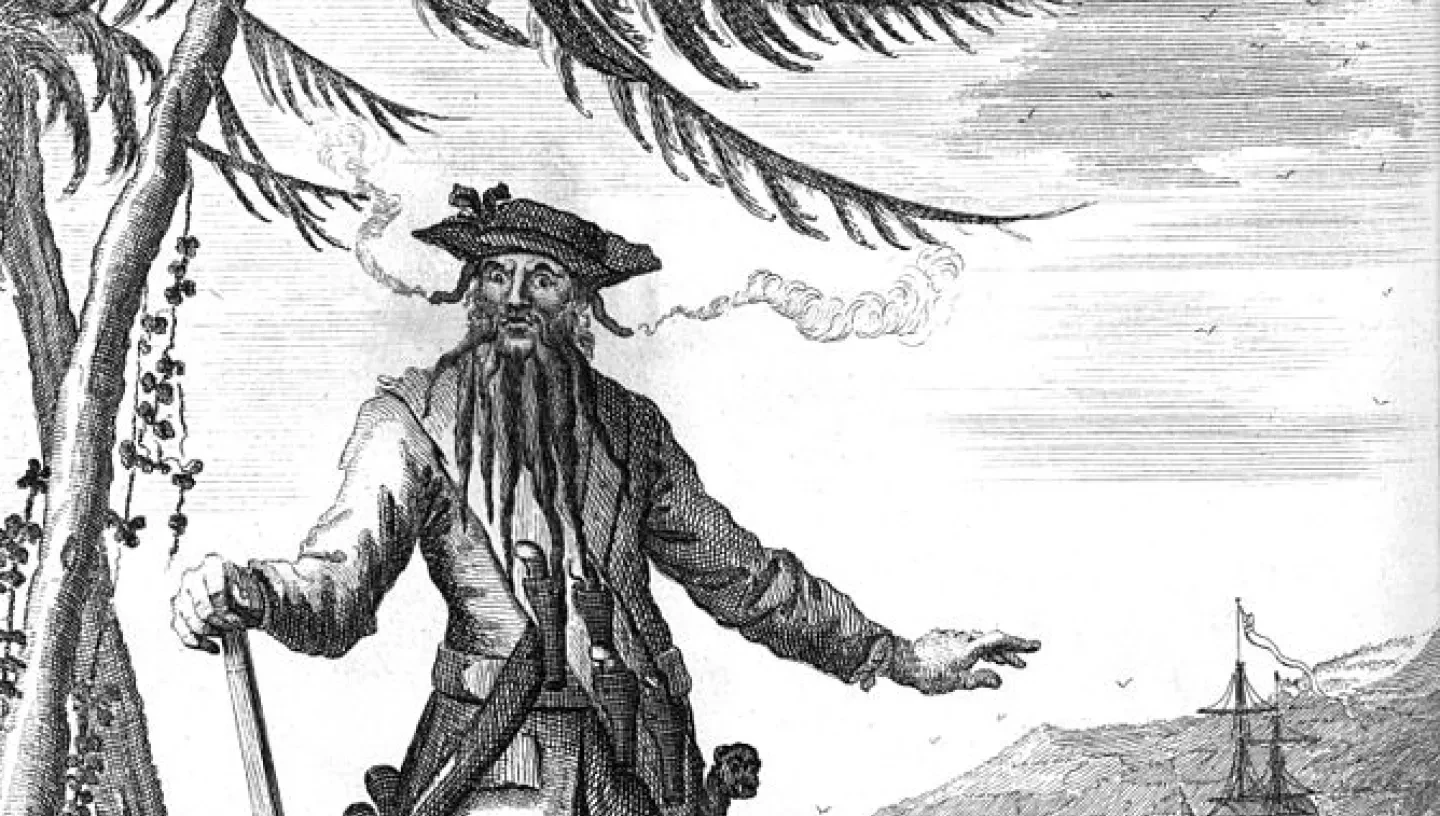
Who were the real pirates of the Caribbean?
While Disney’s Pirates of the Caribbean films are entirely fictional, there is no doubting that the Caribbean was the centre of piracy in the ‘Golden Age of Piracy’.
The real pirates of the Caribbean
In the 17th century, buccaneers lived on the Caribbean island of Hispaniola and its tiny turtle-shaped neighbour, Tortuga. At first, they lived as hunters, and shot wild pigs with their long-barrelled muskets. Their name came from the special wooden huts called boucans where they smoked their meat.
Later, the governors of Caribbean islands such as Jamaica paid the buccaneers to attack Spanish treasure ships and ports. Some of the largest scale raids were led by the Welsh captain, Sir Henry Morgan (later knighted for his services). Although raids began in this way, with official backing, the buccaneers gradually became more and more out of control, eventually attacking any ship they thought carried valuable cargo, whether it belonged to an enemy country or not. The buccaneers had become true pirates.
As Spanish settlers set up new towns on Caribbean islands and the American mainland, these too came under pirate attack.
The Caribbean remained at the centre of lucrative trade as gold and silver gave way to slave trading, tobacco, sugar and so on ensuring a steady supply of attractive targets.
Gold, silver and slavery
From the 16th century, large Spanish ships, called galleons, began to sail back to Europe, loaded with precious cargoes that pirates found impossible to resist. So many successful pirate attacks were made that galleons were forced to sail together in fleets with armed vessels for protection.
Spain’s European rivals especially the French and British spent the next few hundred years in various shifting alliances and both would either rob the Spanish ships directly or issue warrants or ‘letters of marque’ to private ships (privateers) to do so without fear of being hung as pirates (unless of course they were caught by the Spanish).
What made the Caribbean so pirate-friendly?
- Pirates, like smugglers need convenient hide-aways and the Caribbean with its many islands and thousands of bays provided the perfect terrain for raiders.
- The local population had been largely killed off by accidentally imported European diseases to which they had no resistance. With constant malaria and frequent epidemics of yellow fever raging through the Caribbean, official navies were at a significant disadvantage to seasoned crews making naval action that much more difficult.
- The existence of thriving land bases such as Nassau where pirates could sell their ill-gotten (or officially-approved) gains was crucial to the pirate economy.
How did it all end?
While the Caribbean was primarily a staging post for Spanish treasure on its way to Madrid, there was little incentive for the British, French or Dutch to do much to discourage piracy. As Spanish power declined and Britain and France asserted themselves as the dominant regional powers it became obvious that potentially lucrative colonies where slaves were growing tobacco or sugar were threatened by uncertainty at sea and something had to be done to stamp out piracy.
In 1670, the Royal Navy had just two ships in the Caribbean, by 1718 the presence had swelled to 124 and piracy had become a shadow of its former self. A hundred years after that and the French had lost Haiti (their main Caribbean possession) to a slave revolt and Britain had double its number of ships there. The Navy hunted down pirates ruthlessly and dispatched quick and summary justice to anyone they caught.
Outright piracy and the use of pirates as privateers for European states would occasionally flair up but rarely would it remain a significant problem for long. The use of privateers was largely abandoned after the signing of the Treaty of Paris in 1856.


